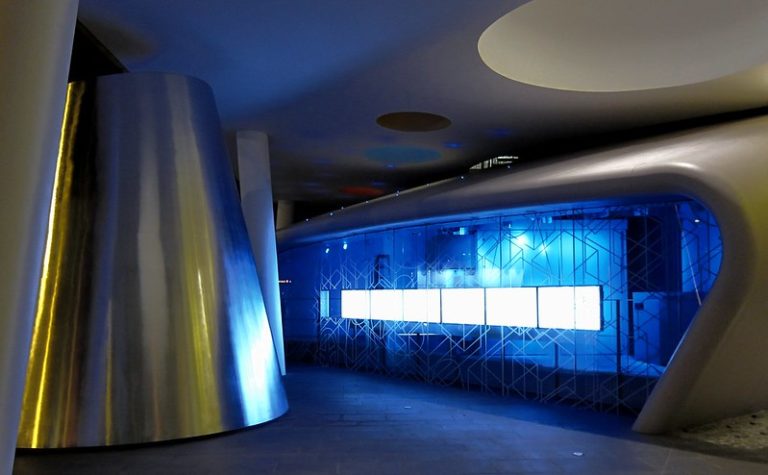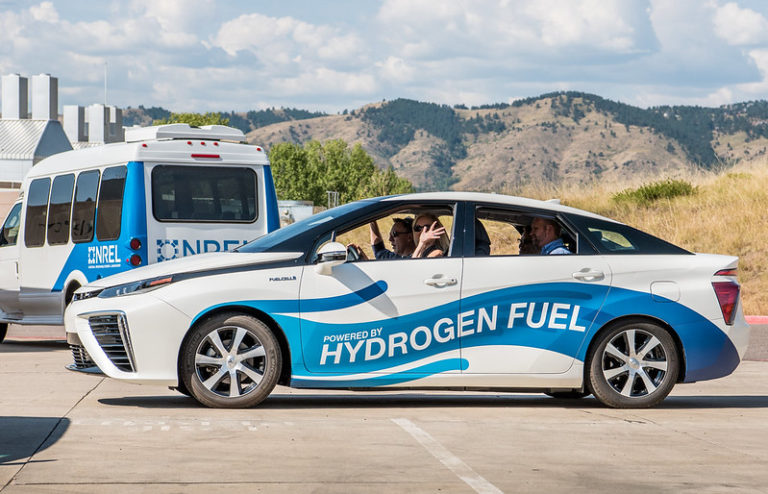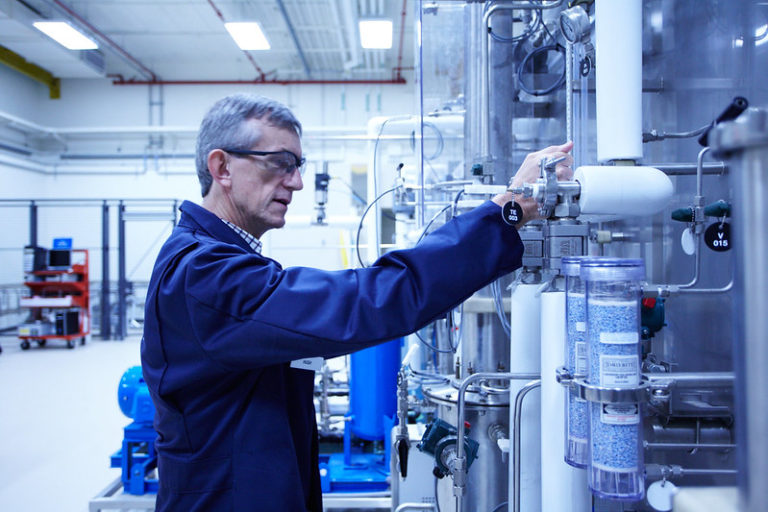As countries chart paths to net-zero economies by 2050, hydrogen has enjoyed a new wave of attention. Proponents believe that it could play a key role in decarbonizing industries such as steel, cement, heavy-duty vehicles, and shipping that cannot feasibly be electrified with current technology.
According to Bloomberg, hydrogen could meet up to 24% of the world’s energy needs by 2050. The promise is certainly attractive. It can replace fossil energy as an industrial feedstock, be converted to electricity through fuel cells, burned for heat, or stockpiled in tanks as a form of energy storage.
Governments have taken note, releasing a score of national hydrogen strategies in the past year. Many of these strategies include subsidies to promote hydrogen through production-related procurement and end-use technologies, support for investment, and favourable regulation.
However, in the rush to promote hydrogen, governments risk wasting billions on subsidies that promote environmentally harmful or redundant technologies. Are these risks justified, and how could this approach impact countries’ environmental targets?

What Is Hydrogen and How Is It Made?
Hydrogen is a gaseous fuel that reacts with oxygen to release energy, producing only water as a byproduct in the process. This means it has the potential to be greenhouse-gas-free—depending on how we produce it. Currently, it is mainly produced from natural gas and coal, resulting in significant greenhouse gas emissions. The hydrogen produced in this emissions-intensive way is called “grey hydrogen.”
However, these emissions could be slashed by switching to renewable hydrogen, which is made by electrolysis (green hydrogen) or potentially adding carbon capture and storage to hydrogen production from natural gas or coal (blue hydrogen).
Current demand is concentrated in a relatively small number of industrial consumers, and it is generally produced close to the point of consumption.
A Wave of Political Support for the Hydrogen Economy
The EU Hydrogen Strategy, released in July 2020, describes hydrogen as a key contributor to Europe’s goal of carbon neutrality by 2050. This would involve replacing fossil fuels with hydrogen in industrial processes and other hard-to-decarbonize sectors. In addition to this strategy, several European countries have released their own national strategies, such as Germany and France.
Related Articles: Harvesting Hydrogen from Seawater | What’s Next for State Climate Action in the US?
Along with new policies, governments have announced new funding, much of it as part of COVID-19 recovery packages. For example, Germany plans to invest EUR 9 billion of its recovery spending in renewable hydrogen to help increase the country’s hydrogen capacity to 5 GW by 2030 and 10 GW by 2040, while France has committed EUR 7 billion to help the country reach 6.5 GW of renewable hydrogen capacity by 2030.
Common to the strategies of EU members is an emphasis on renewable hydrogen over fossil hydrogen using carbon capture. Both Germany and Spain have signalled that they will prioritize green hydrogen, with Germany expected to import most of its supply due to land constraints. The EU Hydrogen Strategy calls for 40 GW of domestic renewable hydrogen production capacity by 2030.
Outside of Europe, U.S. President-elect Joe Biden has also pledged support for renewable hydrogen in his clean energy plan, and Japan’s Hydrogen Roadmap envisions an economy based on imports of both blue and green hydrogen.

Pros of Hydrogen Subsidies
There are many reasons to pursue hydrogen. For one, pollution from fossil fuels imposes serious health and environmental costs. The underpricing of pollution can be considered a market failure, which subsidies to hydrogen technology are an attempt to address. Of course, it can also be argued that pricing pollution directly would better address this failure. However, sometimes it is politically easier to introduce subsidies to cleaner technologies rather than increase taxation on polluting ones.
Subsidies might also be justified by their ability to help the burgeoning hydrogen industry overcome the incumbent advantage currently held by fossil fuels. Government support for a new technology can allow it to reach sufficient scale for commercial deployment. Solar and wind power are now the cheapest ways to generate electricity in most places, but this was not the case until subsidy-driven growth led to sufficient economies of scale for prices to fall.
In any case, subsidies to fossil fuels exacerbate the market failure of underpricing pollution. At the very least, governments should reform fossil fuel subsidies or at least “swap” them to support cleaner energy.
As always, the devil is in the details. Any new subsidies must be sufficiently thought through so that they don’t risk becoming costly and ineffective.
Cons of Hydrogen Subsidies
With billions of public funds at stake at a time when governments must spend taxpayers’ dollars more carefully than ever, it is critical to ensure that subsidies are justified. We have seen it before in countless sectors: subsidies are often expensive; fail to achieve their stated objectives; place a high burden on public budgets; and distort markets, potentially leading to a less efficient distribution of resources. Once in place, they are extremely difficult to remove as companies and consumers become dependent on them.
The G20 made a commitment to reform “inefficient” fossil fuel subsidies in 2009 and, despite much campaigning and public pressure, countries still spend USD 300–600 billion on fossil fuel subsidies globally.
A great deal of resistance to reform is driven by legitimate concerns around potential job losses, energy poverty, and civil unrest. Given all these downsides, governments should be cautious with their use of subsidies.
Do the Potential Opportunities Outweigh the Risks?
At a macro level, it is possible to imagine several ways in which subsidies could be counterproductive.
First, they risk being environmentally counterproductive. Blue hydrogen—produced from fossil fuels but accompanied by carbon capture—can reduce emissions at the point of capture, but methane emissions that escape from the process may undermine any carbon emissions savings. And at an indirect level, revenue from these subsidies could prop up methane production.
Furthermore, carbon capture may also indirectly benefit the fossil fuel industry, as it generally involves reinjection of carbon dioxide into oil wells, boosting fossil fuel recovery of oil from those wells. Combined, these knock-on effects could lead to hydrogen subsidies actually increasing overall greenhouse gas emissions.
Second, there is a risk of redundancy. Although hydrogen can be invaluable when it comes to decarbonizing industrial processes, subsidies could also promote hydrogen-based technologies in sectors that already have cost-effective low-carbon solutions. For example, in many cases, home heating can be decarbonized with electric heat pumps and low-carbon electricity. As such, the availability of existing lower carbon alternatives in this sector negates the need to subsidize alternate solutions.
A third risk comes from the price dynamics observed in the sector and the potential to waste subsidies on what could become stranded assets. Bloomberg forecasts that renewable (green) hydrogen will be competitive with fossil (blue) hydrogen using carbon capture by 2030.
The costs of both electrolysis and renewable energy, especially solar photovoltaic (PV), continue to decline steeply, whereas grey and blue hydrogen production (through steam methane reforming of natural gas) is a mature technology whose cost is projected to remain stable.

Carbon capture and storage costs remain highly uncertain, as very few projects have been implemented. Additional government support for renewable hydrogen may accelerate an even faster drop in price. Within a decade, subsidized production of blue hydrogen may become stranded as green hydrogen becomes competitive.
At a micro level, many more things could go wrong with even well-intentioned subsidies. Procurement processes, price discovery mechanisms, and financial monitoring could be flawed, leading to overpayment, cronyism, or poor transparency around costs and results. For any subsidies that are created, transparency around costs, conditions, contracts, and evaluation is critical to ensure they meet objectives and can be continually evaluated.
The Do’s and Don’ts
We still have much to learn about hydrogen, but we already know enough to make some recommendations about how subsidies could and should be used to promote its deployment. Governments have made clear that promoting it is a priority, so public funds will be committed to supporting this technology, and it is in everyone’s interest that this support is allocated wisely.
Do:
- Be transparent—publish data on hydrogen subsidies, measure and monitor their objectives and costs, and critically evaluate their performance.
- Target subsidies to sectors that have few other options for decarbonization, including cement, steel, and heavy transport.
- Design subsidies to promote activities that have been solidly proven to be low carbon.
Don’t:
- Promote technologies that have negative environmental impacts across the systemic or full life-cycle impact of subsidies on the energy system, or where data is incomplete, and there is a strong risk of such negative environmental impacts.
- Subsidize technologies in sectors where there are already sufficient cost-effective low-carbon alternatives that are better placed to reduce emissions, such as passenger vehicles and home heating and cooking.
- Support technologies or projects that have no path to cost-effectiveness or risk becoming stranded assets in the medium term.
The jury is still out on the extent to which hydrogen will play a major role across the various parts of the energy system, so it is essential that public subsidies are disbursed in line with what we already know and that the evidence is kept under constant review as the technology develops. We can’t afford to miss out on a technological revolution, but we certainly can’t afford to spend billions financing white elephants either.
About the authors: Richard Bridle supports IISD’s Geneva-based Global Subsidies Initiative as Senior Policy Advisor and Lead, Renewable Energy. Estan Beedell is an energy policy consultant at IISD.
EDITOR’S NOTE: The opinions expressed here by Impakter.com columnists are their own, not those of Impakter.com.— In the Featured Photo: Welders inside a large liquid hydrogen tank for NASA’s Space Launch System at the Michoud Assembly Facility in New Orleans. Featured Photo Credit: NASA










